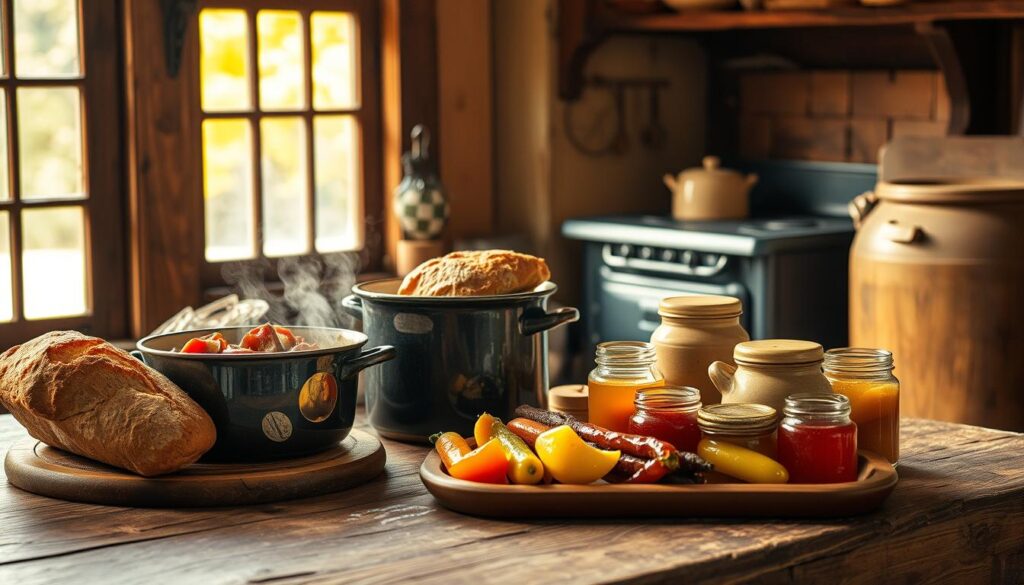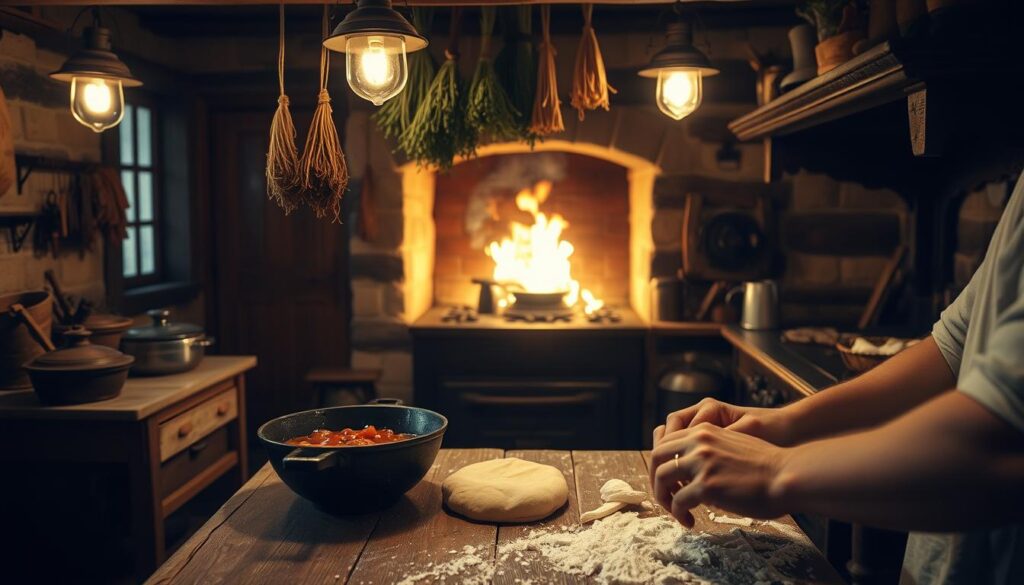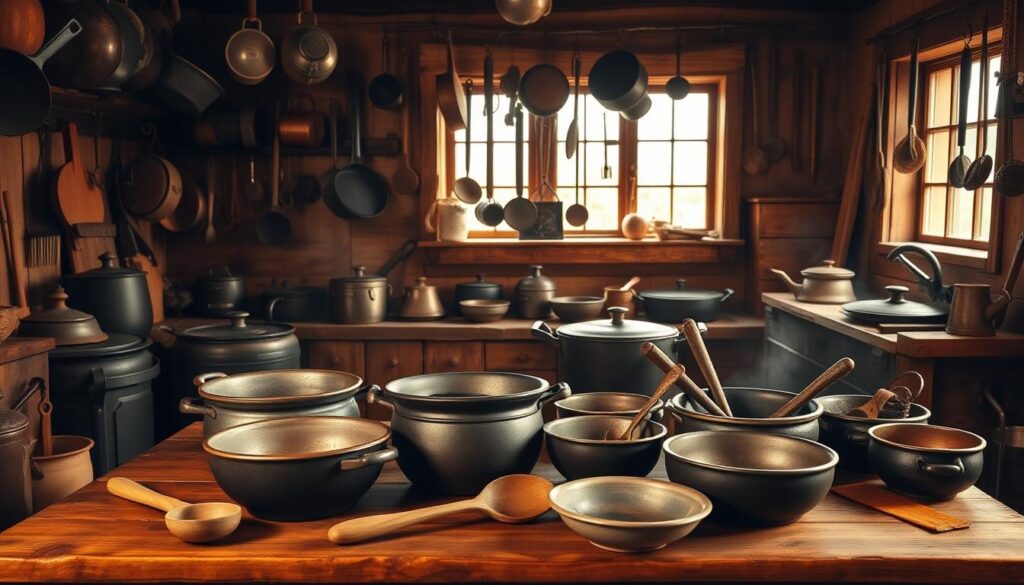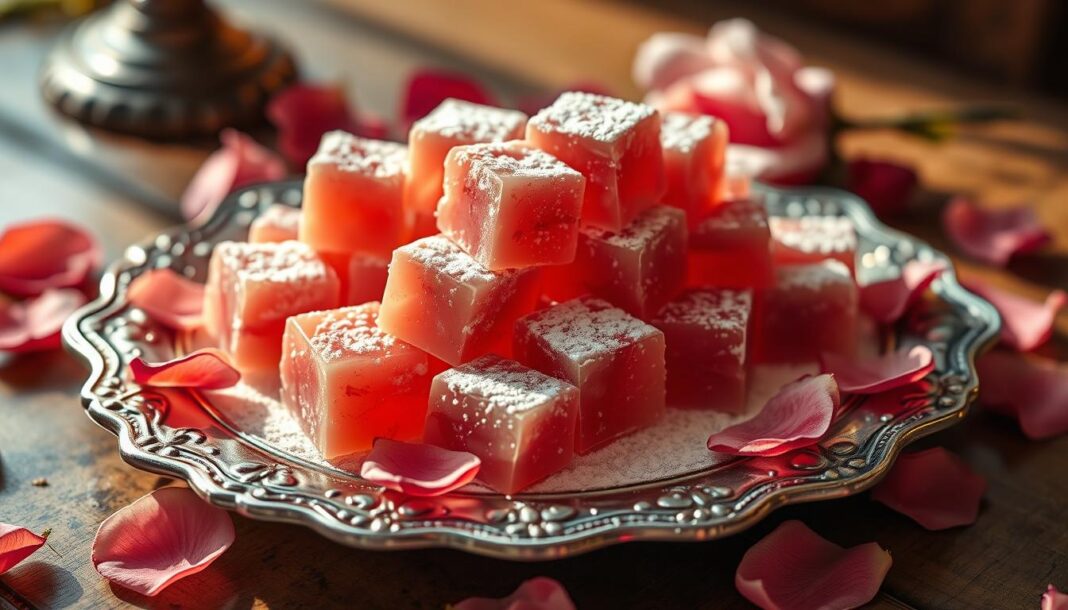We are about to take you on a culinary journey through the ages, exploring the rich world of vintage cooking techniques and recipes that have stood the test of time. In our test kitchen, we’ve been researching and recreating authentic old timey food preparations that not only deliver incredible taste but also evoke a sense of nostalgia.
Our exploration into historical cooking methods reveals that traditional recipes often produced more flavorful results despite having fewer technological advantages. By understanding these timeless techniques, modern home cooks can reconnect with culinary traditions and enhance their cooking skills.
Key Takeaways
- Discover the secrets behind traditional recipes that have stood the test of time.
- Learn how our test kitchen researches and recreates authentic vintage cooking preparations.
- Understand why historical cooking techniques continue to resonate with modern home cooks.
- Explore how traditional recipes can enhance your cooking skills and connection to culinary traditions.
- Uncover forgotten recipes and ingredients that deserve a place in today’s kitchens.
The Nostalgic Appeal of Old Timey Food
The nostalgia associated with old timey food is undeniable, transporting us back to a simpler era. We often find ourselves craving the comforting taste of our grandma’s home cooking, which is more than just a meal; it’s an emotional connection to our childhood and family traditions.

Why We Crave Grandma’s Cooking
Grandma’s cooking is often associated with warmth and love. The recipes she used are a link to our past, evoking memories of family gatherings and special occasions. We crave these dishes because they represent a connection to our heritage and the love that goes into preparing a meal.
The Comfort of Historical Recipes
Historical recipes provide comfort by offering a sense of continuity in an ever-changing world. These recipes, often passed down through generations, bring a taste of nostalgia and familiarity. They remind us of our favorite dishes from childhood, making us feel at home.
| Aspect | Modern Recipes | Historical Recipes |
|---|---|---|
| Ingredients | Often complex and varied | Typically simpler, using traditional ingredients |
| Taste Profile | Can be innovative and bold | Frequently features more pronounced, traditional flavors |
| Emotional Connection | May lack historical or personal significance | Rich in emotional and historical significance, connecting us to our grandma‘s cooking and family traditions |
Time-Honored Cooking Techniques
The art of cooking has been refined over centuries, with techniques like slow cooking and preservation standing the test of time. Our test kitchen has experimented with these traditional methods, finding that they still produce exceptional results today.

Slow Cooking Methods of the Past
Historical slow cooking methods developed out of necessity, resulting in superior flavor development and tenderness in many dishes. Techniques like braising, stewing, and roasting break down tough cuts of meat and develop complex flavors in a way that quick-cooking methods cannot replicate. This slow and low approach requires patience but yields rewarding results, often with fewer ingredients.
Traditional Food Preservation
Traditional food preservation techniques, such as smoking, curing, pickling, and fermentation, not only extended shelf life but also created entirely new flavor profiles. These methods allowed our ancestors to enjoy seasonal produce year-round and added variety to their diets. By applying these techniques, we can enjoy a wider range of flavors in our cooking and reduce food waste.
Essential Tools in Historical Kitchens
In our exploration of historical cooking, we’ve discovered that the right tools made all the difference. The effectiveness of a recipe often depended on the tools used to prepare it.
Historical kitchens relied heavily on a few indispensable tools that have stood the test of time.
Cast Iron Cookware
Cast iron cookware was a staple in many historical kitchens due to its durability and versatility. When properly seasoned, it provided a naturally non-stick surface, ideal for a variety of cooking tasks. Our test kitchen experiments have confirmed that cast iron cookware produces superior results for certain recipes.

Hand-Powered Kitchen Gadgets
The ingenuity of hand-powered kitchen gadgets allowed for efficient food preparation without the need for electricity. These tools not only simplified tasks but also contributed to the development of greater skill among home cooks. By understanding and utilizing these historical tools, we can enhance our modern cooking experiences.
Classic Old Timey Food Staples
Classic old timey food staples have been the backbone of American cuisine for generations. These foundational dishes have not only sustained families through challenging times but have also shaped the country’s culinary identity.
Bread and Biscuits
Homemade bread and biscuits were central to historical American kitchens, serving as the foundation of daily meals. We examine how these staples were made and their significance in traditional recipes.
Hearty Stews and Soups
The evolution of soup recipes maximized flavor while stretching limited ingredients, making them a staple during economically challenging times. We explore how these dishes were adapted over time.
Traditional Casseroles
Casseroles developed as efficient one-dish meals, combining proteins, starches, and vegetables in creative ways. We analyze their development and how they’ve maintained their essential character.
These classic recipes have been adapted over time, reflecting regional differences and cultural influences. For instance, if you’re looking for something sweet, you can try making lemon-frosted fruit bars from the 1940s.
| Staple Dish | Key Ingredients | Cultural Influence |
|---|---|---|
| Bread and Biscuits | Flour, Water, Yeast | European |
| Hearty Stews and Soups | Vegetables, Meat, Broth | Native American, European |
| Traditional Casseroles | Protein, Starches, Vegetables | American, European |
Grandmother’s Secret Meat Dishes
Our grandmothers knew the secret to making tough cuts of meat tender and delicious. They achieved this through patient cooking and clever techniques.
Pot Roast and Slow-Cooked Meats
Slow-cooking methods were used to transform tough, inexpensive cuts into tender, flavorful meals. Techniques like wrapping pork in pancetta or bacon kept the meat moist and added flavor. The science behind slow-cooking involves breaking down collagen in the meat, resulting in a tender texture.
Chicken and Dumplings
Chicken and dumplings is a quintessential comfort food that was often used to stretch limited protein to feed large families. Our recipe for chicken and dumplings uses precooked chicken and store-bought stock for convenience, while maintaining the traditional taste and sauce that makes this dish a classic.
These traditional meat recipes balanced frugality with flavor, maximizing taste and satisfaction. By understanding the techniques behind grandmother’s legendary meat dishes, we can recreate these comforting meals in our own kitchens.
Vintage Side Dishes Worth Reviving
From creamed vegetables to cornbread and corn pudding, we’re reviving the vintage side dishes that will elevate your meals. These classic recipes not only add flavor and texture to your table but also bring a touch of nostalgia and warmth.
Let’s start with creamed vegetables, a rich and indulgent side dish that transforms humble garden produce into a luxurious treat. By combining milk, cream cheese, and a touch of butter, you can create a decadent side dish that’s sure to please.
Creamed Vegetables
Creamed vegetables have been a staple in many cuisines, particularly during the winter months when fresh produce was scarce. This comforting side dish is not only delicious but also versatile, allowing you to use a variety of vegetables such as peas, carrots, or green beans.
Cornbread and Corn Pudding
Cornbread and corn pudding are two Southern classics that have been delighting families for generations. By using cornbread mix and canned corn, you can create a corn pudding casserole that’s both easy to prepare and comforting to eat. For an extra-homey touch, try adding frozen corn kernels to your cornbread recipe.
Old-Fashioned Potato Recipes
Potatoes have been a staple ingredient in many cuisines, and vintage potato recipes offer a creative twist on traditional preparations. From creamy mashed potatoes to roasted potato salads, these recipes showcase the versatility of this humble tuber.
Some key benefits of reviving vintage side dishes include:
- Adding variety to your meals with new flavors and textures
- Preserving culinary traditions and cultural heritage
- Creating comforting, homey dishes that evoke a sense of nostalgia
By incorporating these vintage side dishes into your modern meals, you can add a touch of history and warmth to your table. Whether you’re a food enthusiast or just looking for new recipe ideas, these classic side dishes are sure to become new favorites.
Historical Pasta and Rice Dishes
Pasta and rice have been staples in many cuisines for centuries, evolving into various dishes that warm our hearts and homes. These ingredients have been the foundation of countless traditional recipes, often tied to cultural and family heritage.
Traditional Macaroni and Cheese
Macaroni and cheese is a beloved comfort food that has evolved significantly over time. Originally a dish for the elite, it became a staple across economic classes. The key to its creamy texture lies in the technique, using a blend of cheeses and a touch of spice, such as ground mustard and hot pepper sauce, to enhance the taste. This old-fashioned baked macaroni and cheese recipe brings back nostalgic flavors.
Rice Pudding and Casseroles
Rice pudding is another comforting dish with historical roots. Using arborio rice and cooking it low and slow with milk, vanilla, and sugar creates a creamy pudding. Folding whipped cream into the cooked pudding adds a lovely lightness. Rice and pasta casseroles have also been economical ways to create filling meals, stretching limited ingredients into satisfying casserole recipe.
Old Timey Breakfast Traditions
As we explore the world of old timey food, we find that breakfast was a meal that brought people together, often featuring locally sourced ingredients and time-honored recipes that were passed down through generations.
Historical breakfast traditions were substantial, fueling a day of physical labor with hearty, energy-rich meals prepared in home kitchens. These meals were not just about sustenance; they were also about community and cultural heritage.
German Pancakes and Griddle Cakes
German pancakes, also known as Dutch babies, are a delightful breakfast treat that has stood the test of time. Made with simple ingredients like eggs, flour, and milk, these puffy pancakes are a perfect recipe for a special occasion or a lazy Sunday morning. Serving them with homemade buttermilk syrup elevates the dish, adding a tangy taste that complements the sweetness of the pancake.
The cultural significance of German pancakes and other European-influenced breakfast recipes cannot be overstated. They became integrated into American cooking, reflecting the country’s melting pot heritage.
Country Breakfast Staples
Country breakfast staples like biscuits with gravy, fried potatoes, and cured meats were staples in many American households. These high-calorie, nutrient-dense combinations provided sustained energy throughout the morning, making them an essential part of a meal that could last until lunchtime.
The techniques behind creating perfect buttermilk pancakes and other griddle cakes remain popular today, with many home cooks continuing to rely on traditional methods and ingredients to create delicious breakfast treats.
Desserts from Grandma’s Recipe Box
Grandma’s recipe box is filled with timeless desserts that continue to captivate our taste buds today. These classic treats, passed down through generations, hold a special place in our hearts and kitchens. We explore the cherished traditions behind these desserts, from the flaky crusts of fruit pies to the comforting warmth of old-fashioned puddings and the simplicity of traditional cakes and cookies.
Classic Fruit Pies
Fruit pies have long been a staple of American baking, with grandmothers transforming seasonal harvests into delectable desserts. The perfect blend of a buttery crust and soft fruit filling, often enhanced with dark brown sugar and pure vanilla extract, creates a rich, caramelized flavor. We examine how these pies were made, using techniques that have been passed down through generations.
Old-Fashioned Puddings
Old-fashioned puddings provided comforting sweetness through simple ingredients and careful technique. These desserts were often made with basic kitchen staples, showcasing the resourcefulness of our grandmothers. We look at the variety of puddings that were popular and how they were prepared.
Traditional Cakes and Cookies
Traditional cake and cookie recipes often relied on spices, molasses, and dried fruits to create complex flavor profiles. These desserts were not only delicious but also reflected the seasonal availability of ingredients and the practical limitations of kitchens before modern refrigeration and appliances. We analyze how these recipes were adapted to the ingredients available.
| Dessert Type | Key Ingredients | Traditional Technique |
|---|---|---|
| Fruit Pies | Fruit, butter, sugar, vanilla | Blind baking, filling |
| Old-Fashioned Puddings | Milk, sugar, eggs, flavorings | Boiling, steaming |
| Traditional Cakes and Cookies | Flour, sugar, spices, molasses | Baking, often with wood-fired ovens |
By understanding these historical dessert recipes, we can appreciate the ingenuity and skill of our grandmothers. We can also bring these timeless desserts into our own kitchens, adapting them to modern tastes while preserving their traditional essence.
Holiday Cooking Through the Ages
As we explore the rich history of holiday cooking, we uncover the traditions that have shaped our celebrations. Holiday cooking has long been a cornerstone of cultural heritage, with many recipes being passed down through generations.
The evolution of Christmas and Thanksgiving meal traditions is a fascinating study. Certain dishes have become essential to these celebrations, often due to their historical significance or the role they play in family gatherings. For instance, a perfectly roasted turkey is a centerpiece for many Thanksgiving meals.
Christmas and Thanksgiving Traditions
Christmas and Thanksgiving are times when families come together to share elaborate meals. Our test kitchen has worked to recreate historical holiday recipes, adapting them for modern cooks while preserving their essential character and taste.
| Holiday | Traditional Dish | Modern Twist |
|---|---|---|
| Thanksgiving | Roasted Turkey | Herb-Infused Gravy |
| Christmas | Honey-Baked Ham | Brown Sugar Crust |
Special Occasion Recipes
Holiday recipes are often more elaborate than everyday cooking, showcasing special ingredients and techniques. To make a sweet and sharp glaze for a honey-baked ham, mix together honey, Dijon mustard, brown sugar, and ground cloves. This recipe is perfect for Easter or Christmas dinner.
The Art of Pickling and Preserving
For generations, the techniques of pickling and preserving have enabled cooks to extend the harvest and savor the flavors of their favorite fruits and vegetables long after the growing season has ended. This traditional knowledge has been passed down through families, with each vintage recipe adding its unique twist to the preservation process.
In our test kitchen, we’ve explored the essential role of pickling and preserving in historical kitchens. These techniques not only ensured food security through winter months but also created distinctive flavors and textures that have become integral to various cuisines. By balancing acidity, salt, and spices, traditional pickle recipes achieved a perfect harmony that kept vegetables crisp and flavorful.
Balancing Flavors in Pickles
Traditional pickle recipe development involved a deep understanding of how to balance flavors. For instance, the addition of red pepper flakes in pickled green beans provides a nice punch, while the dill flavor enhances the overall taste. This recipe is a testament to the resourcefulness of our ancestors, who managed to create delicious and lasting products from seasonal produce.
The Art of Jam and Jelly Making
Preserving fruit through jam and jelly making was another way to enjoy seasonal abundance throughout the year. These techniques transformed fleeting summer flavors into year-round treats, capturing the essence of the harvest time. Our test kitchen has tested various recipes to identify the best methods for achieving superior results.
| Preservation Method | Key Ingredients | Resulting Flavor |
|---|---|---|
| Pickling | Vegetables, Vinegar, Salt, Spices | Sour, Salty, Spicy |
| Jam Making | Fruit, Sugar, Pectin | Sweet, Fruity |
| Jelly Making | Fruit Juice, Sugar, Pectin | Clear, Sweet, Fruity |
Forgotten Flavors and Ingredients
Exploring the archives of old cookbooks and recipes, we uncover a treasure trove of forgotten flavors and ingredients. Our test kitchen has been experimenting with these historical elements to bring back their unique flavor profiles.
Some of the most intriguing discoveries include:
- Heirloom vegetables that have largely disappeared from modern markets but offer unique nutritional profiles and taste.
- Old-world spice combinations that create distinctive and complex flavor profiles in historical recipes.
Heirloom Vegetables
Heirloom vegetables are a fascinating aspect of historical cuisine. Varieties like the vintage ‘Rouge d’Hiver’ squash and ‘Brandywine’ tomato are being rediscovered for their unique taste and nutritional value.
Old-World Spice Combinations
Historical recipes often utilized spice blends that have fallen out of fashion. Our test kitchen has been experimenting with recreating these blends to add depth to modern dishes, enhancing their overall flavor and bringing back the essence of historical cooking.
Regional Old Timey Food Specialties
Regional old timey food specialties showcase the diverse culinary heritage across America. These specialties have been shaped by local ingredients, cultural influences, and practical adaptations to different environments. Our test kitchen has researched and recreated authentic regional specialties, preserving techniques and flavor profiles that might otherwise be lost.
Southern Comfort Classics
The Southern United States is renowned for its comfort classics, such as fried chicken and biscuits. A traditional recipe for fried chicken might include a buttermilk brine with dry mustard powder and ground paprika, which keeps the chicken super moist and adds flavor. This recipe is best enjoyed hot while it’s still crispy. Southern cuisine is also famous for its distinctive pie recipes, like the Indiana sugar cream pie, also known as “Hoosier” sugar cream pie.
Northeastern Heritage Dishes
Northeastern heritage dishes reflect the influence of European immigrants, coastal seafood traditions, and adaptations to cold climate agriculture. The region’s culinary identity is shaped by its history and geography. For more information on regional dishes, you can visit Wikipedia’s list of regional dishes of the United. The Northeastern United States offers a rich culinary heritage worth exploring.
| Region | Specialty Dish | Key Ingredients |
|---|---|---|
| Southern | Fried Chicken | Buttermilk, dry mustard powder, ground paprika |
| Northeastern | Clam Chowder | Clams, potatoes, cream |
| Midwestern | Sugar Cream Pie | Cream, sugar, vanilla |
Regional food traditions serve as important cultural markers and sources of identity for communities across the United States. By exploring and preserving these specialties, we can gain a deeper understanding of American culinary history and its regional diversity.
Adapting Historical Recipes for Modern Kitchens
The art of adapting historical recipes for modern kitchens is a delicate balance between preserving tradition and embracing innovation. As we explore the rich culinary heritage of the past, we must consider how to make these dishes practical for today’s home cooks.
One of the primary challenges lies in converting vague measurements used in historical recipes, such as “a handful” or “a teacup full,” into precise modern equivalents. Our test kitchen has developed methods for substituting hard-to-find historical ingredients with accessible modern alternatives without sacrificing authenticity.
Converting Measurements and Ingredients
When adapting historical recipes, we often encounter ingredients that are no longer readily available or measurements that are too vague. Some key considerations include:
- Substituting historical ingredients with modern alternatives
- Converting outdated measurement units to standard modern units
- Adjusting ingredient ratios to suit contemporary tastes
Time-Saving Adaptations
To make historical recipes more practical for modern home cooks, we employ various time-saving adaptations. These include using precooked ingredients, such as precooked chicken, and store-bought stock, which can significantly reduce preparation time without compromising flavor.
By embracing these adaptations, we can enjoy the rich flavors and traditions of historical cooking in our modern kitchens, making dinner preparation more efficient and enjoyable.
The Cultural Significance of Old Timey Food
The cultural significance of old timey food extends far beyond the kitchen, influencing our sense of identity and community. Old timey food is more than just a collection of recipes; it’s a bridge to our past, connecting us to our ancestors and their traditions.
Food as Family Heritage
Family recipes serve as tangible connections to our heritage, preserving not just flavors but memories and cultural identity across generations. Recreating dishes from childhood often evokes powerful memories and connections to family members who may be gone. For instance, a classic recipe like prune cake can become a cherished family tradition, baked year after year for special occasions.
Preserving Culinary Traditions
Cooking traditions serve as vehicles for storytelling and oral history, with recipes often containing embedded narratives about family events and values. Preserving these culinary traditions contributes to cultural continuity and provides a sense of belonging in an increasingly disconnected world. By maintaining classic recipes that have been passed down for years, we keep our cultural heritage alive.
Bringing Historical Cooking to Your Table Today
As we conclude our journey through the world of old timey food, it’s clear that historical cooking techniques have much to offer modern home cooks. By incorporating traditional recipes into our meal planning, we can simplify dinner preparation while delivering comforting flavors. One-pot meals like casseroles and soups are perfect examples of this. Our test kitchen has found that classic dishes such as mac and cheese, buttermilk cornbread, and creamy desserts are particularly successful with modern diners.
Sharing the stories behind these historical recipes can enrich the dining experience, connecting family members to their cultural heritage through food. We can build a collection of essential historical recipes that form the foundation of a home cook’s repertoire, from bread and soup basics to show-stopping cream pies and holiday turkey with dressing. By doing so, we preserve traditional cooking methods and create new memories around the dinner table.


